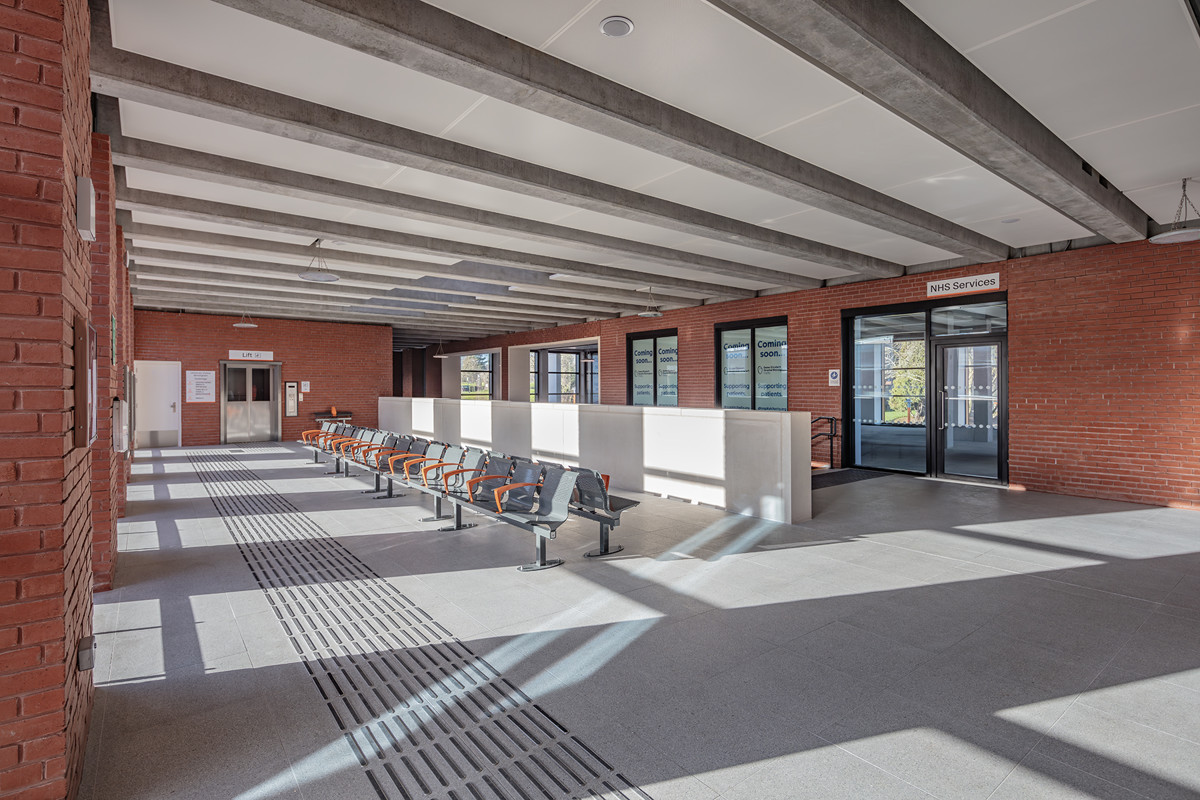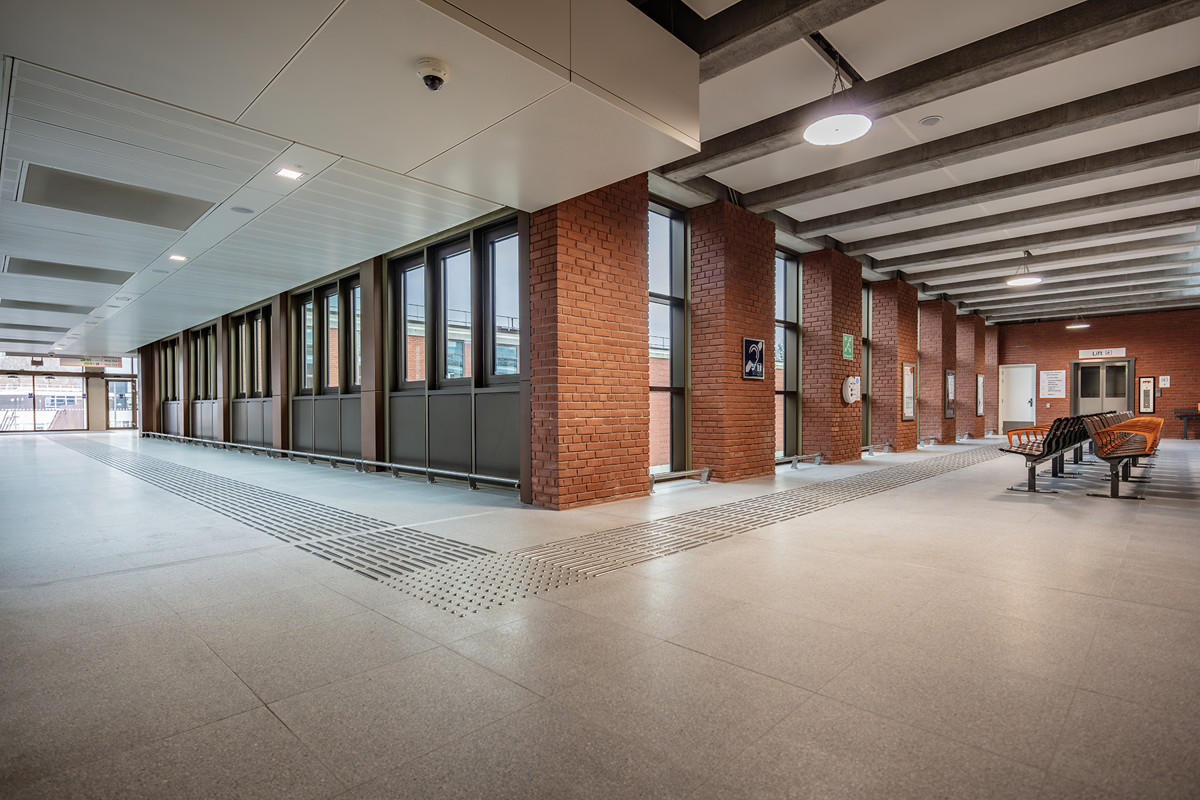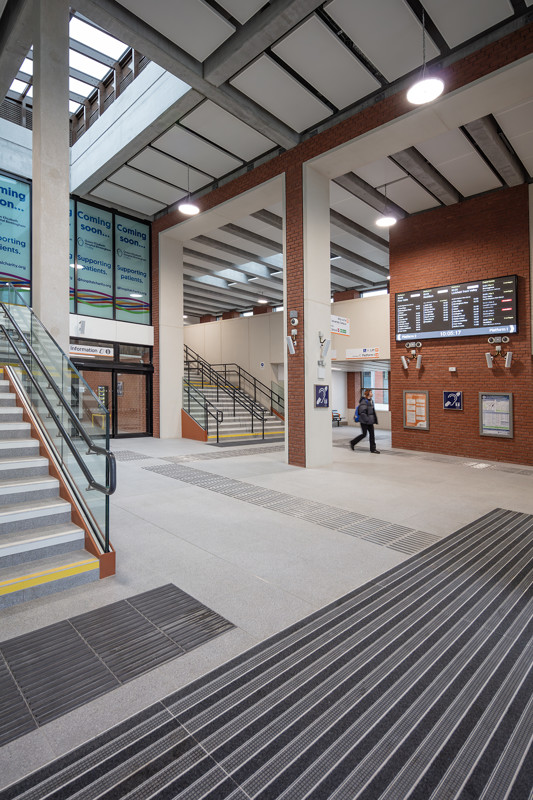University Station, Birmingham
SAS International supplied over 1,000sqm of metal ceiling solutions to the new Birmingham University railway station following a complex three-year construction. With two new buildings featuring wider entrances, stairways and new facilities, passengers are met with a new and improved experience.
SAS International worked alongside Associated Architects, supported by Mott MacDonald, to deliver the design and installation of the new station acoustic ceilings. This project was a collaborative effort from start to finish, working through numerous environmental and historical challenges. It was the collaboration between partners and supply chain that allowed the project to achieve BREEAM ‘Very Good’ status.
Above the main entrance, SAS330 Lay-In acoustic tiles have been specified to provide complete void access and integration of essential services, while maintaining a clean, continuous appearance. Finished in RAL 9010 Pure White, this system not only complements the SAS600 rafts but also contrasts the red brick structure, which ties back to the university's heritage.
SAS600 rafts, finished in Pure White with acoustic backing pads, have also been specified throughout the station to provide acoustic absorption to the exposed concrete structural features. The coffered concrete ceiling connects the building to the surrounding 1970s buildings that emerged during the university's expansion. SAS600 offers complete design flexibility and can be specified across a wide range of applications.
The original building was designed to accommodate 500,000 passenger journeys per year and with over 40 years of service, it was time for a well deserved refurbishment. The new station serves both the University of Birmingham and Queen Elizabeth Hospital, accommodating up to 3.5 million journeys per year, while the original building remains in use as an exit only.
Over the past decade, visitor numbers have increased rapidly with the expansion of the university and the hospital redevelopment. The new station currently handles 3.5 million journeys per year but has been designed to accommodate up to 7.2 million passengers annually, allowing for steady growth in the years to come.
Sector:
Transport
Client :
Network Rail
Architect:
Associated Architects
Main Contractor :
VolkerFitzpatrick
Completion Year :
2024
System Type:
SAS600 & SAS330
Region :
Birmingham, UK







